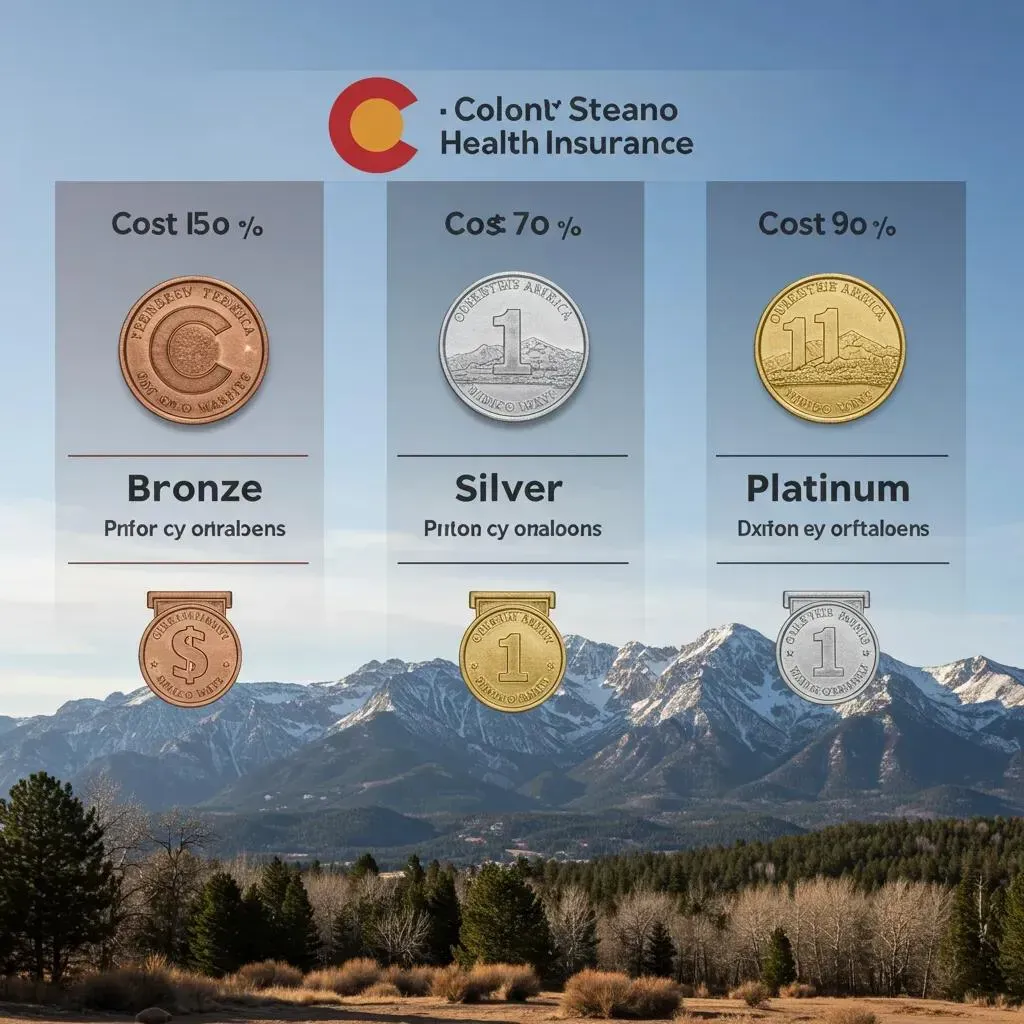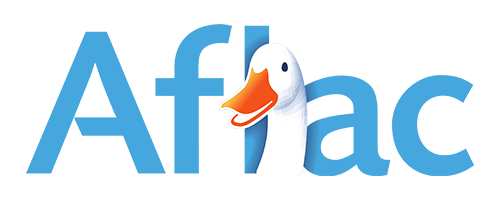Self-Employed in Colorado Springs? Local Health Insurance & PPO Guide
Self-Employed in Colorado Springs? Local Health Insurance Plans, PPO Options, and Income-Based Coverage Explained

Being self-employed in Colorado Springs means managing both a business and your own health coverage, and that dual responsibility requires clear, local guidance. This article explains where self-employed Coloradans can get insurance, how marketplace mechanics and income-based subsidies work, which PPO options may suit independent workers, how the Colorado Option changes shopping, and tax strategies that reduce costs. Self-employed includes 1099 contractors, single-member LLC owners, freelancers, gig workers, and sole proprietors; each of these groups must weigh marketplace enrollment, off-marketplace plans, and public programs when deciding coverage. You will learn step-by-step enrollment channels, how premium tax credits and cost-sharing reductions affect monthly premiums, PPO versus HMO tradeoffs, when Medicaid or CHIP applies, and how the 100 percent self-employed premium deduction influences adjusted gross income. Practical examples and comparison tables will help you estimate affordability for 2025, and later sections explain when working with a local broker may speed up network checks and subsidy estimation. Read on to get a localized, actionable view of individual and family health insurance options for Colorado Springs self-employed households.
How Can Self-Employed Individuals Get Health Insurance in Colorado Springs?
Self-employed individuals in Colorado Springs can obtain coverage through several primary channels: the state marketplace (Connect for Health Colorado), off-marketplace private plans, a spouse’s or partner’s employer plan, or public programs like Health First Colorado for eligible low-income residents. Each channel functions differently: the marketplace connects eligibility to premium tax credits and cost-sharing reductions, private plans can offer specialized networks or PPO flexibility, employer plans may provide richer benefits, and Medicaid fills gaps for those under income thresholds. Understanding each channel helps you match cost, network access, and subsidy eligibility to personal needs. Below we break down how each channel works and what to check before enrolling, including proof of self-employment income and timing.
What Is Connect for Health Colorado and How Does It Help the Self-Employed?
Connect for Health Colorado is the state health insurance marketplace where individuals and families shop standardized plans and apply for financial assistance based on household income. The marketplace calculates advance premium tax credits (PTC) and flags eligibility for cost-sharing reductions (CSR) when applicants provide income estimates, including self-employment projections. For self-employed people, the mechanism links estimated net business income to subsidy amounts, which are then advanced monthly to reduce premiums. Using the marketplace matters because off-marketplace plans generally do not qualify for PTC or CSR, so enrolling through the marketplace preserves affordability options.
Colorado Health Insurance Enrollment Barriers and ACA Implementation
As part of the implementation of the Affordable Care Act, Colorado has expanded Medicaid and also now operates its own health insurance exchange for individuals (called Connect for Health Colorado). As of early 2014, more than 300,000 Coloradans have newly enrolled in Medicaid or health insurance through Connect for Health Colorado, but there also continues to be a diverse mix of individuals in Colorado who remain eligible for but not enrolled in either private insurance or Medicaid. The Colorado Health Foundation commissioned the RAND Corporation to conduct a study to better understand why these individuals are not enrolled in health coverage and to develop recommendations for how Colorado can strengthen its outreach and enrollment efforts during the next open enrollment period, which starts in November 2014.
Barriers to enrollment in health coverage in Colorado, JC Blanchard, 2014
What Are the Metal Tier Plans Available for Self-Employed in Colorado?

Metal tiers—Bronze, Silver, Gold, and Platinum—classify marketplace plans by average actuarial value and trade off premium versus out-of-pocket protection. Bronze plans have lower monthly premiums but higher deductibles and are often chosen by people who want low-cost protection against catastrophic events. Silver plans balance premium and cost-sharing and are the only tier that qualifies for CSRs, which lower deductibles and copays for eligible enrollees. Gold and Platinum plans raise monthly premiums but reduce out-of-pocket costs for frequent users of care. Choosing a tier depends on your expected use of care, cash-flow needs, and whether you qualify for CSRs, which make Silver plans particularly valuable for many self-employed households.
When Are Open Enrollment and Special Enrollment Periods for Self-Employed?
Open enrollment for individual plans typically runs during a fixed annual window when anyone can sign up or change coverage, while Special Enrollment Periods (SEPs) allow off-window enrollment after qualifying life events. Common qualifying events include losing other health coverage, household changes like marriage or birth, and moving to a new ZIP code. To claim an SEP, you must provide documentation that verifies the event within specified timeframes and complete enrollment steps promptly. If you miss open enrollment and lack a SEP, short-term or off-marketplace options may exist but often lack subsidy eligibility, making timely action important.
This table compares common enrollment channels for self-employed Coloradans and highlights typical eligibility, subsidy access, and enrollment complexity.
The following table summarizes how each enrollment channel compares on key attributes relevant to self-employed individuals.
Catastrophic Plan
Subsidy Eligibility: Generally not eligible for premium tax credits.
HSA Compatibility: Not HSA-eligible.
Best Use-Case: Ideal for young, healthy adults under 30 seeking low premiums and protection from major medical emergencies.
Bronze Plan
Subsidy Eligibility: Eligible for subsidies depending on income.
HSA Compatibility: Not HSA-eligible.
Best Use-Case: Suitable for individuals wanting moderate premiums with some coverage for occasional care and more predictable costs.
High Deductible Health Plan (HDHP)
Subsidy Eligibility: Possible, depending on income and marketplace rules.
HSA Compatibility: Yes — fully HSA-eligible if it meets IRS criteria.
Best Use-Case: Best for savers who want to build pre-tax medical savings and can manage higher deductibles through an HSA strategy.
This comparison clarifies tradeoffs: marketplace enrollment unlocks subsidies, private plans offer flexibility, employer coverage may be cost-effective, and Medicaid can be a safety net for lower-income households. If you want local assistance to compare marketplace and off-marketplace options and verify networks, a broker can speed the process and help estimate subsidies.
Kelmeg & Associates, Inc. is a Colorado-based health insurance brokerage that can assist self-employed residents with navigating Connect for Health Colorado and off-marketplace options. Their local expertise helps translate income estimates into subsidy expectations and identify plan networks that fit Colorado Springs providers. Using a broker like Kelmeg does not add cost to your plan because broker commissions are included in premiums by law in Colorado; the broker’s role is advisory and can streamline enrollment and SEP documentation. After reviewing channels and subsidy basics, the next section explains income-based assistance and worked examples.
What Income-Based Health Insurance Options and Subsidies Are Available in Colorado Springs?
Income-based assistance for marketplace plans includes Premium Tax Credits (PTC), which lower monthly premiums, and Cost-Sharing Reductions (CSR), which reduce out-of-pocket costs for eligible Silver plan enrollees. PTC is calculated from household income relative to the Federal Poverty Level (FPL) and is advanced monthly to the insurer based on your estimate. CSRs require enrollment in a Silver-tier plan and further lower deductibles, copays, and coinsurance for those within certain FPL bands. For self-employed individuals, estimating net business income accurately matters because advance PTC is reconciled at tax time via Form 1095-A and Form 8962.
Who Qualifies for Premium Tax Credits and Cost-Sharing Reductions?
Premium Tax Credits are available to households with incomes between certain percentages of the FPL who are not eligible for affordable employer-sponsored coverage or Medicaid. Cost-Sharing Reductions are available only to those whose income falls within a narrower FPL range and who select a Silver marketplace plan. Household composition, tax filing status, and expected annual income determine qualification. Self-employed taxpayers must include projected net earnings after business expenses when estimating income, and adjustments during the year should be reported to avoid large reconciliations at tax time.
How Do Income-Based Subsidies Lower Monthly Premiums for Self-Employed?
Advance PTC directly reduces the monthly premium you pay by applying estimated subsidy amounts to your chosen plan, while CSRs lower out-of-pocket costs after you receive care. The marketplace computes the subsidy by comparing the plan’s premium to a benchmark and the household’s expected contribution based on income. Self-employed individuals who under- or over-estimate income face year-end reconciliation: underestimates can create a tax repayment obligation, while overestimates leave unclaimed credits. Practical tips include conservative income estimates, quarterly tax payments, and updating projected income when business earnings change.
What Examples Illustrate Income Levels and Corresponding Assistance?
Concrete examples help illustrate likely outcomes for 2025 subsidy mechanics based on common FPL bands. For a single adult at 150% FPL, premium tax credits often reduce monthly premiums substantially and CSRs can lower out-of-pocket limits when enrolled in Silver plans. At 250% FPL, credits are smaller but still meaningful; many households in this band see moderate monthly premiums. Near 400% FPL, credits taper, and premiums approach full cost without assistance. These examples vary by plan, family size, and local premium levels, so they are illustrative rather than definitive.
| Household Income (% FPL) | Subsidy Type | Typical Effect on Monthly Premiums |
|---|---|---|
| 150% FPL | PTC + CSR (if Silver) | Large reduction in premiums; low copays and deductibles |
| 250% FPL | PTC only | Moderate premium reduction; standard cost-sharing applies |
| 350% FPL | PTC only (smaller) | Small premium reduction; higher out-of-pocket exposure |
These examples demonstrate how income bands drive subsidy outcomes. For more precise, personalized estimates, brokers experienced with Colorado marketplace rules can model scenarios for your expected net self-employment income.
Kelmeg & Associates, Inc. has experience advising self-employed individuals on subsidy eligibility and premium tax credit estimation for Colorado marketplace plans and can help model scenarios to reduce unexpected reconciliation at tax time. Their guidance is especially useful if your income fluctuates across the year or you want to compare the subsidy effect across plan tiers.
Which PPO Health Insurance Plans Are Best for Self-Employed in Colorado Springs?
Preferred Provider Organization (PPO) plans allow greater provider choice and out-of-network coverage flexibility, which benefits self-employed people who need access to specific specialists or established providers. PPO mechanics include broader provider access without referrals, variable cost-sharing for out-of-network care, and generally higher premiums than HMOs. For self-employed professionals with ongoing specialist relationships or who travel within the region, a PPO can preserve continuity of care. Below we outline key PPO features, list common carriers that offer PPO options in Colorado, and compare PPOs to HMOs and HDHPs.
What Are the Key Features of PPO Plans for Self-Employed?
PPO plans prioritize provider flexibility by offering in-network benefits plus partial coverage for out-of-network care, eliminating routine referral requirements for specialists. This flexibility usually comes at higher monthly premiums and sometimes higher cost-sharing for out-of-network services. PPOs are valuable for people who already have trusted specialists, unpredictable care needs, or cross-regional care requirements. When choosing a PPO, evaluate network breadth for key local hospitals and specialist availability relative to premium differentials.
Which Carriers Offer PPO Plans in Colorado Springs?
Several major carriers offer PPO-style plans or broad-network options in Colorado, and availability can vary by county and year, so checking local network listings is essential before selecting a plan. Brokers and carrier provider directories help verify whether your preferred hospitals and clinicians participate in a given PPO network. The table below compares carriers in terms of local network strength, typical plan tier availability, and HSA compatibility for HDHP options when offered alongside PPOs.
| Carrier | PPO Network Strength (local hospitals/providers) | Typical Plan Tier Availability | HSA Compatibility |
|---|---|---|---|
| Major Carrier A | Strong presence around regional hospitals and specialists | Bronze–Platinum marketplace tiers often available | Some carriers pair HDHP options with HSA eligibility |
| Major Carrier B | Broad outpatient and specialist networks in Colorado Springs | Silver and Gold commonly offered | HDHP options available in select plans |
| Major Carrier C | Good hospital access but variable specialist listings by ZIP | Range of tiers depending on county | HSA-compatible HDHPs in some markets |
How Do PPO Plans Compare to HMO and High-Deductible Plans?
Comparing PPO, HMO, and High-Deductible Health Plans (HDHPs) clarifies tradeoffs among cost, flexibility, and tax benefits. HMOs typically require referrals and limit coverage to a smaller in-network set, often reducing premiums; they work well for predictable primary-care-driven needs. HDHPs pair with Health Savings Accounts (HSAs) to provide tax-advantaged savings for medical expenses and can lower premiums for cash-conscious self-employed taxpayers. PPOs balance higher premiums with provider freedom, while HDHP+HSA is attractive for tax-savvy individuals who can fund savings and tolerate higher upfront cost-sharing.
Consider the following when choosing:
- Network priorities: Choose PPO if access to out-of-network providers matters.
- Cost management: Choose HDHP+HSA for lower premiums and tax benefits if you can save pre-tax.
- Care patterns: Choose HMO for integrated primary-care management and lower premiums.
These decision criteria help match plan architecture to your work pattern and healthcare utilization. If you need help mapping local networks to your provider list, a broker can expedite verification.
What Is the Colorado Option and How Does It Benefit Self-Employed Coloradans?

The Colorado Option is a standardized set of health plans designed to increase affordability and simplify comparisons by mandating consistent benefits and some cost controls. It benefits self-employed Coloradans by offering predictable coverage features across participating plans, which reduces surprise differences in primary care access, behavioral health, and certain chronic condition supports. The Colorado Option aims to lower patient costs through plan design while making apples-to-apples comparisons easier when shopping on the marketplace. For self-employed households balancing variable income and healthcare needs, predictability in covered services supports budgeting and provider selection.
What Are the Standardized Benefits of Colorado Option Plans?
Colorado Option plans include standardized benefits that often feature $0 copays for primary care visits and mental health services, predictable prescription coverage tiers, and explicit coverage for certain chronic condition supplies. Standardization ensures that essential benefits are consistent across carriers offering the Colorado Option, which aids consumers in comparing premiums and out-of-pocket exposure. Populations that frequently benefit include people with chronic illnesses, families anticipating regular pediatric care, and pregnant people who need predictable prenatal benefits. Standard benefits can reduce administrative surprises and improve cost estimation for households.
How Does the Colorado Option Simplify Health Insurance Shopping?
By imposing a consistent benefit design, the Colorado Option reduces variability between plans so shoppers can focus on price and network differences rather than granular benefit language. This standardization works well with subsidy eligibility because premium differences become clearer and CSR interactions are easier to forecast for Silver-tier shoppers. When comparing plans, look at provider networks and out-of-pocket maximums after confirming the plan uses Colorado Option standard designs. The Colorado Option’s predictability can simplify decision-making for self-employed individuals juggling income volatility and healthcare needs.
Are Medicaid and CHIP Available for Low-Income Self-Employed in Colorado Springs?
Health First Colorado (Colorado’s Medicaid program) and the Children’s Health Insurance Program (CHIP) provide coverage for eligible low-income individuals and families, including self-employed applicants who fall below program income thresholds. Eligibility depends on household size, income, and categorical rules; self-employed income is counted as net earnings after allowable business deductions. These public programs generally offer lower out-of-pocket costs than marketplace plans and can be the most affordable coverage route for qualifying households. Next, we outline eligibility considerations and the scope of covered services.
What Are the Eligibility Requirements for Medicaid and CHIP?
Eligibility for Health First Colorado and CHIP depends primarily on household income relative to program-specific limits, with special rules for children, pregnant people, seniors, and people with disabilities. Self-employed applicants must provide income documentation, such as recent tax returns, profit-and-loss statements, or estimated earnings, to verify net income. Household composition and tax filing status influence the applicable income thresholds. If you anticipate income variability, report changes promptly to maintain appropriate coverage and avoid gaps.
What Coverage Do Medicaid and CHIP Provide for Self-Employed Individuals?
Medicaid and CHIP cover a comprehensive set of essential health benefits, typically including primary care, preventive services, hospital care, behavioral health, and prescription drugs, often with minimal cost-sharing. For families, CHIP provides tailored coverage for children with protections that can be broader than marketplace options at similar cost levels. While marketplace plans might offer broader provider choices in some cases, Medicaid and CHIP reduce financial barriers for eligible individuals and families. If you qualify, enrollment can free up household cash flow and provide strong baseline coverage while you stabilize business earnings.
How Can Self-Employed Individuals Maximize Tax Benefits from Health Insurance in Colorado?
Self-employed taxpayers can reduce taxable income through the 100 percent self-employed health insurance premium deduction, which allows qualifying individuals to deduct premiums for themselves, their spouse, and dependents from gross income on the individual tax return. This deduction effectively lowers adjusted gross income (AGI), which can improve eligibility for other credits and reduce income tax liability. The deduction cannot exceed net self-employment income and is taken above-the-line, benefiting a wide range of independent workers who pay for their own health insurance. Understanding how this interacts with marketplace advance PTC is essential when planning.
What Is the 100 Percent Health Insurance Premium Deduction for Self-Employed?
The deduction allows self-employed people who report business income on Schedule C, partnership K-1, or similar forms to subtract qualifying health insurance premiums from gross income when calculating AGI. Qualifying premiums include individual and family plan premiums paid during the tax year, but the deduction is limited by net business profit. The deduction does not apply if you are eligible to participate in an employer-sponsored plan through a spouse. Accurately tracking premium payments and net business income ensures you claim the maximum allowable deduction.
How Does This Deduction Impact Adjusted Gross Income and Taxes?
Reducing AGI via the self-employed premium deduction can lower tax liability and affect eligibility thresholds for other credits and deductions that use AGI as a benchmark. For example, a lower AGI may reduce phase-outs for retirement contribution eligibility or improve subsidy calculations on the marketplace when filing taxes. However, claiming the deduction can complicate PTC reconciliation because advance credits are based on expected household income; careful coordination between estimated income, premium credits, and the deduction is necessary. Many self-employed taxpayers benefit from consulting a tax professional or working with an experienced broker to align tax planning with coverage choices.
Why Should Self-Employed Individuals in Colorado Springs Work with a Local Health Insurance Broker?
Working with a local health insurance broker brings practical benefits: brokers translate marketplace rules into household-specific subsidy estimates, verify provider networks for Colorado Springs, and speed administrative tasks like SEP documentation. Using a broker can clarify plan tradeoffs, screen carriers for network fit, and model year-round income fluctuations that affect advance premium tax credits. In Colorado, using a broker is cost-neutral for consumers because broker compensation is built into plan pricing by regulation, so the advisory value comes without added direct fees. Below are explicit benefits and how Kelmeg & Associates, Inc. aligns with those advantages.
What Are the Benefits of Using Kelmeg & Associates, Inc. for Health Insurance?
Kelmeg & Associates, Inc. provides personalized expert guidance tailored to Colorado residents, helping navigate Connect for Health Colorado, off-marketplace options, and the Colorado Option. Their value propositions include localized knowledge of Colorado plans and carriers, assistance estimating premium tax credits and reconciling year-end subsidy differences, and comprehensive advice across individual, family, and employer group benefits. Because broker commissions are included in plan prices by law in Colorado, their support is cost-neutral to consumers. For self-employed individuals who need help aligning income estimates with plan selection, this advisory role can reduce enrollment errors and surprise tax liabilities.
How Does Kelmeg’s Local Expertise Improve Plan Selection?
Local expertise matters because network coverage and hospital affiliations vary by county and sometimes by ZIP code, so a broker familiar with Colorado Springs can quickly determine whether a plan includes preferred hospitals and specialists. Kelmeg’s local perspective helps prioritize carriers and plans that match your actual provider needs and the Colorado Option’s standardized benefits when applicable. Brokers also expedite verification by using carrier provider directories and practical checks to confirm network participation, reducing the risk of selecting plans that exclude essential clinicians. This network-first approach complements subsidy modeling and cost projections.
How Can Self-Employed Individuals Contact Kelmeg for Expert Assistance?
To get brokerage assistance, search for Kelmeg & Associates, Inc.’s public contact channels to request individualized help with plan selection, subsidy estimates, and enrollment mechanics. Engaging a broker early in the decision process can clarify whether marketplace enrollment, an off-marketplace PPO, or public coverage is the best route for your household. Remember that using a broker in Colorado does not increase the price of your plan because compensation is included in plan premiums, allowing you to obtain expert support without additional direct cost.
Start by gathering recent income estimates and provider preferences to make any consultation more efficient.
- Gather your documents: Recent tax returns, year-to-date profit/loss, and a list of preferred providers help brokers produce accurate subsidy and network analyses.
- Model income scenarios: Ask for conservative and optimistic income projections to see the subsidy and tax reconciliation implications.
- Verify provider networks: Confirm that your primary care clinician and key specialists are in-network for candidate plans.
These steps ensure productive broker consultations and reduce surprises during year-end reconciliation or when filing for a Special Enrollment Period.
Frequently Asked Questions
What should self-employed individuals consider when choosing between PPO and HMO plans?
When deciding between PPO and HMO plans, self-employed individuals should evaluate their healthcare needs, budget, and provider preferences. PPOs offer greater flexibility in choosing healthcare providers and do not require referrals for specialists, making them ideal for those with specific healthcare relationships or unpredictable care needs. However, they typically come with higher premiums. In contrast, HMOs usually have lower premiums but require members to use a network of doctors and obtain referrals for specialist care. Assessing your expected healthcare usage and financial situation is crucial in making the right choice.
How can self-employed individuals estimate their income for health insurance applications?
Self-employed individuals can estimate their income for health insurance applications by calculating their net earnings from self-employment. This involves taking total business revenue and subtracting allowable business expenses. It's important to use realistic projections based on past earnings and current contracts. Keeping detailed records of income and expenses throughout the year can help ensure accurate estimates. Additionally, consulting with a tax professional can provide guidance on how to best represent income for subsidy eligibility and avoid discrepancies during tax reconciliation.
What are the implications of underestimating income when applying for health insurance subsidies?
Underestimating income when applying for health insurance subsidies can lead to significant financial repercussions. If your actual income exceeds the estimated amount, you may receive too much in advance Premium Tax Credits (PTC), resulting in a tax repayment obligation when you file your taxes. This can create unexpected financial strain. To mitigate this risk, it's advisable to provide conservative estimates and update your income projections throughout the year if your earnings fluctuate. Regularly reviewing your income can help maintain accurate subsidy calculations and avoid surprises at tax time.
What resources are available for self-employed individuals seeking health insurance in Colorado Springs?
Self-employed individuals in Colorado Springs can access various resources for health insurance, including the Connect for Health Colorado marketplace, local health insurance brokers, and community organizations that provide assistance. The marketplace offers a platform to compare plans and apply for subsidies. Local brokers, like Kelmeg & Associates, can provide personalized guidance, help navigate options, and ensure you understand eligibility for financial assistance. Additionally, community health centers may offer information on public programs like Medicaid and CHIP for those who qualify based on income.
How does the Colorado Option impact health insurance choices for self-employed individuals?
The Colorado Option standardizes health insurance plans to enhance affordability and simplify comparisons for consumers. For self-employed individuals, this means predictable benefits across participating plans, making it easier to assess coverage options. The Colorado Option aims to lower costs by implementing consistent coverage features, which can be particularly beneficial for those with variable incomes. By reducing the complexity of plan comparisons, self-employed individuals can make more informed decisions that align with their healthcare needs and financial situations.
What steps can self-employed individuals take to prepare for health insurance enrollment?
To prepare for health insurance enrollment, self-employed individuals should gather essential documents, including recent tax returns, profit-and-loss statements, and a list of preferred healthcare providers. Understanding your expected income for the upcoming year is crucial for estimating subsidy eligibility. Additionally, researching available plans and their networks can help ensure that your preferred providers are included. Consulting with a local broker can also streamline the process, providing personalized assistance and clarifying any questions about plan options and enrollment procedures.
Conclusion
Self-employed individuals in Colorado Springs can navigate health insurance options effectively by understanding the local marketplace, available subsidies, and plan types. By leveraging resources like Connect for Health Colorado and working with knowledgeable brokers, you can secure coverage that meets your unique needs while maximizing financial benefits. Taking the time to explore your options ensures you make informed decisions that support both your health and business. For personalized assistance, reach out to a local broker today to start your journey toward optimal health coverage.













